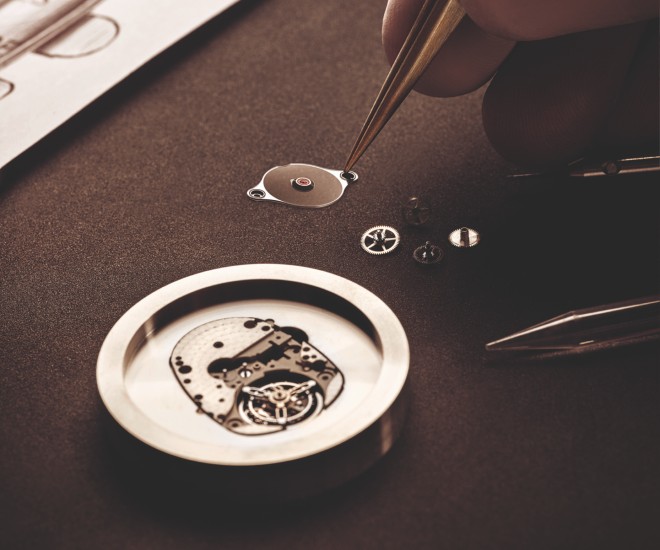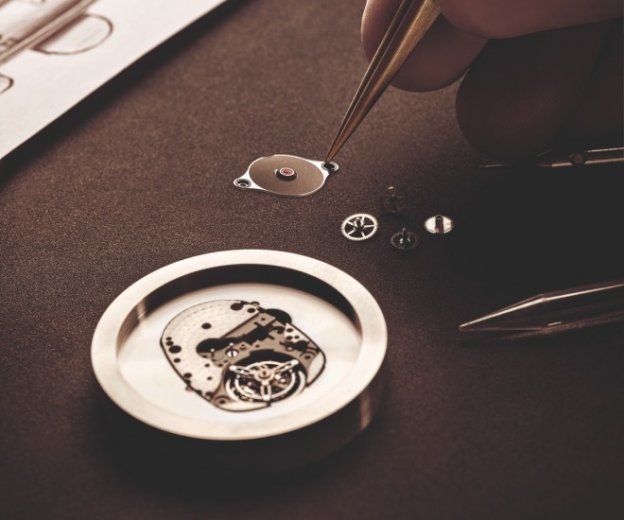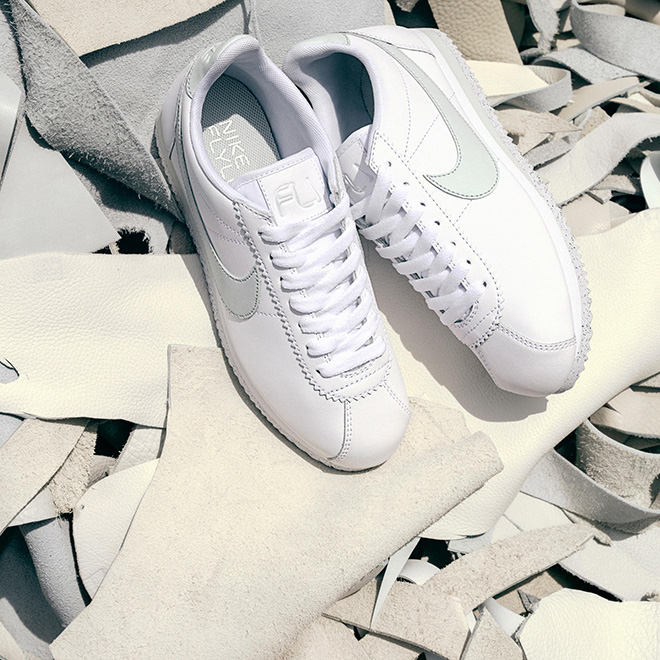
It may be strange to find this written anywhere, but this moment in time is perhaps still too early to ask questions about sustainability in watchmaking. Not premature mind you, just a little too early to get useful answers. It is the useful answers part there that informed the decision to begin this section with caveats.
On the face of it, given that climate change is progressing no matter our perspective on it, the discussion on this subject is still at the start line. For example, the industry has just about come around to the idea that the origins of the materials used to make the watches are key. As far as we know, the first public discussion of the realities of the supply chain was at the Salon International de la Haute Horlogerie (now called Watches & Wonders) in 2019.
Unfortunately, this is not an indication that watchmaking is ahead of the game here because public reports, including the World Wildlife Fund had already called for greater transparency in this regard as early as 2018, as we dig into elsewhere in this section.
Prior to this, some watchmaking maisons were talking about how their new manufactures were carbon neutral, and of course their support for various causes. These days though, just these steps will fall short of the mark, at best. At worst, they open the industry to accusations of greenwashing. This is really a shame because a lot of good work is being done, or supported by watchmaking brands.
Typically, we avoid watchmaking industry insider stories in favour of those with a stronger relevance to consumers – collectors and enthusiasts like you, in other words. There is a good reason to care about transparency and sustainability for all of us though, and it can summed up in one word: cost.
Not only will prices of Swiss watches likely rise as companies add measures and oversight to cope with regulatory pressures, there may be environmental and reputational costs as well. Just think about how you would feel about your watch if the brand that made it was found to be supporting forced labour in gold mines, or contributing to the degradation of the environment thanks to the practices of some random supplier. It happens in fashion all the time, after all.
Sustainability watch
The Deloitte Swiss Watch Industry Study 2020 notes that more than 50 per cent of consumers surveyed said that sustainability was very important to them, so the cost of not running afoul of this group will certainly be worth it. It seems from the report that the so-called Millenials and Gen Z groups care even more about sustainability than other age groups. We will be referring to this report and its findings quite extensively in this story.

We pause here for a moment to congratulate Chopard on having the foresight and the will to do better, as far as the gold they are using goes. The brand’s Fairmined initiative back in 2013 was the first effort by a major watch and jewellery house to address the impact of the business on the natural world and marginalised communities. We also congratulate Oris on becoming a climate-neutral company, certified by ClimatePartner, a leading independent climate action expert.
The company not only makes products that are sustainable, but also calculates the impact of its entire business, right down to workers commuting to the office. It earned climate-neutral status by offsetting more than 2,500 tonnes of CO2 through its sustainability initiatives. We will have a little more to say about this elsewhere in this section, but we wanted to single out Oris here as a way to show how other brands might also be doing the same, yet not communicating it directly enough.
This may lead some to draw links with the fashion industry, which recently received a tongue-lashing from firebrand climate-change activist Greta Thunberg. Bear in mind, the fashion industry actually makes raw data available to a variety of authorities to confirm that their supply chains are not contaminated by any evil practices. Even so — or perhaps because of this — it gets a lot of flak.
Clear and present danger
Some may see a certain degree of adjacency in the worlds of watchmaking and fashion [Editor’s note: on LUXUO, watches used to fall under the Style category], with the world’s largest luxury conglomerate LVMH running iconic names such as Louis Vuitton and TAG Heuer. Of course, it also runs Moet Chandon and Glenmorangie and no one suggests any adjacency there.
For our part, it seems clear that all industries will have to see that they are not causing harm, at the very least, so some standards might apply across the board. Setting such standards is a challenge, of course, and poses all kinds of political risks.
This was on show at the World Economic Forum this year, as global business leaders cited climate action failure as a major risk for the economy, and one with the best chance of being mitigated by a coordinated global response. The key point here is that risk, which is not acting in a harmful manner, but in merely failing to prevent harm.
Accountants everywhere are now working to integrate this particular risk into their formulas, especially with regards to multinationals. One relevant example here was called the Responsible Business Initiative, which was rejected by Swiss voters last November, but this is not the end of that story.
Fast fashion certainly receives the lion’s share of the wrath of climate activists, and it probably deserves it, if news reports are anything to go on [Editor’s note: too many to cite]. Any so-called luxury brands using child labour for any reason ought to be tarred and feathered (and probably fined into oblivion). So far, there has not even been a whiff of scandal in watchmaking, but this might come down to the subject that preoccupies us in this issue: transparency. But we are racing ahead of ourselves again, and risking getting tripped up by our own feet.
The realistic view
Backing up again to our opening assertion, by too early to discuss, we mean to say that there are many industries that have to grapple with their impact on the planet – tier one players, if you will – and watchmaking firms (especially those with a mechanical focus) are nowhere near that level.
We take the view that it is pointless to tear into watch firms when coal-fired power plants are still merrily burning away like there is no tomorrow. Actually, more are being built to meet tomorrow’s demands, according to The Economist, the Financial Times and many more mainstream sources.
There is some understanding within the trade of this obvious fact, with executives still claiming that mechanical watches are sustainable products, because they are not disposable. This is not a false statement, of course, but it does tend to lead to some unearned praise. H. Moser & Cie made quite a memorable joke about this some years ago with a statement watch, but we will hear more from the brand directly and candidly on the subject of sustainability later in our conversation with CEO Edouard Meylan.
To refer back to our earlier praise of Oris, CEO Rolf Studer put it most succinctly in a comment related to the climate neutral news, as delivered to WatchPro: “A mechanical watch has a very low impact on the environment because it’s designed to last. But that’s not enough,” he says. The first part of Studer’s statement is echoed by many watch industry executives, high and low. The second part, not so much, with a number of executives concerned about trade secrets and competitive advantages.

Walking the talk
Cartier CEO Cyrille Vigneron addressed this directly with us as he explained the brand’s drive towards greater transparency in its entire operations. “The transparency I am talking about has nothing to do with trade secrets. It is about the raw materials that go into our products, and our supply chain.”
He publicly explained during Watches & Wonders earlier this year that the brand was deeply concerned about the world, and the impact of its business on the same. Vigneron noted that brands could not just say they were sustainable, they had to prove it. Richemont, the parent group of Cartier, has been talking the talk, and walking the walk for perhaps longer than any other group, which is why its brands rank highest in the WWF report.

To frame this admittedly long narrative, we must add an expected caveat. If you love watches but are concerned about the environmental impact of current industrial practices, then you must turn to vintage watches. Aside from the obvious (you are extending the lifespan of a watch), you also do not have to trouble yourself with any thoughts about how the contemporary company making watches with the same badge conducts itself.
This is important because it is often impossible to be sure watchmaking firms are doing all the right things if you do not want to take their word for it. This brings us back to sustainability, and that law that will go before Swiss legislators in place of the aforementioned Responsible Business Initiative.
The sustainability conversation in watchmaking tends to coalesce around the unfortunate subject of transparency. Well, transparency is the most significant roadblock, and is thus the most well-known and persistent problem. It goes back to the debate over Swiss Made standards, and to third-party movement suppliers working surreptitiously for a few major brands.
It all sounds very suspicious, like some sort of Tom Clancy novel, but really it is all quite pedestrian. Like the business of making hairsprings, there really is not much to shout about here but to prove that we would need to supply evidence.. which is lacking. As you will have guessed, the Swiss watchmaking trade tends to be opaque by tradition.
Coming changes
This is where Swiss legislators hold the reins as they consider a law next year that will force even private companies to make certain non-financial disclosures. These include the following, according to Deloitte:
- Environmental concerns
- Social and employee concerns
- Respect for human rights
- Combating corruption
Reportedly, this legislation cannot be shrugged off by even private and family-owned firms because every Swiss firm will be called to order, as long as they meet the following criteria:
500 full-time positions or CHF 20 million balance sheet total and/or CHF 40 million in sales (source: Deloittes). The New York Times reports that affected companies will have to “ensure the traceability of their supply chains, and make their reports publicly available for 10 years…” We need not spell out exactly which companies will be taking notice here.
As watch enthusiasts, collectors, traders and even hobbyists, we know that these will include the biggest and most powerful names in watchmaking. As mentioned, watchmaking firms are not specifically targeted, and are certainly far from being tier one players, which we repeat for clarity.
That being said, climate change rhetoric is heating up, thus lighting a fire under the feet of watch industry executives. In 2018, the WWF report called out a startling number of brands for their alleged lack of transparency in a widely cited public document.
You can easily find these stories — and the report itself — online by searching for sustainability in watchmaking, but despite the attention, the topical subject remains largely difficult to discuss. The expert sources we found for this special section mostly pointed to one chief area: the supply chain, specifically where and how watchmakers get their raw materials.
To outline the problem more succinctly, consider all the metal that gets used to make wristwatches, cases, movements, bracelets and all. Most of the world might be shocked to learn that the average watch in stainless steel already uses a significant percentage (up to 50 per cent) of recycled iron.
This varies from material to material, with titanium and aluminium on the higher end of the scale, while ceramic hugs the bottom at zero percent. This is because of material properties and engineering challenges, not some sort of conspiracy, to be clear. Indeed, the ceramic used in your typical higher-end watch might very well be eternal — well everlasting and evernew as a sapphire anyway.
No silver bullets
For the purposes of transparency, we will acknowledge a few points before moving on. First and foremost is that this magazine urges better transparency for Swiss watchmaking, in general. Having said that, dear readers, you may detect sour notes of cynicism throughout this section, but what you are sensing is our pessimism.
Pessimism is a little more honest than cynicism, and we hope to blunt this by making a few active recommendations. Transparency is the most important thing, for the same reason we asked CEOs how their manufactures were coping with the pandemic. Watches are fun, and they are meant to be.
Something that is fun should not be hurting anyone, at the very least. No one should be suffering so that we can have fine timepieces, in other words. This article alludes to this point, but it should be made explicit. This, we think, is the most basic position we can take. Indeed, this should be the starting position for any firm that makes watches.

Secondly, we should be wary of arbitrary standards. One such example is illustrated by the Panerai Submersible eLab-ID, which would be currently the most sustainable watch in the world, if it were a full production model, which it is not. In any case, Panerai had found a way to make this watch out of 98.6% material.
To be more precise, that is the percentage of recycled material in the watch, by weight. So, the obvious question is why not go the extra mile? “To get that last 1.4%, we would have to use so much energy that it wouldn’t be saving anything…Our idea isn’t to do something at an idotic level, just to say we did it,” Panerai COO Jerome Cavadini told us. In other words, the cost of doing something positive for the world should not result in a negative for the environment. That would be idiotic, and yet it may well be the result of reductionist thinking. Sustainability is a complex matter that will not be solved by overly simplistic approaches.
On that note, we have to move to the unknowns, which is the most vexing aspect of sustainability. For example, are Richemont brands so highly regarded by the WWF report because they are better communicators than some independents? While we do try to present each major group’s position on sustainability elsewhere in this section, often there is no news to report.
Even the very positive Oris news does not mean it will rank highly in the next edition of the WWF report, assuming the brand is included, which it was not in 2018. How you feel about the Oris achievement depends on what you think of ClimatePartner, an organisation you may never have heard of. We have a compromise solution to suggest, which we will get to in the second part of this section.
By Ashok Soman

























